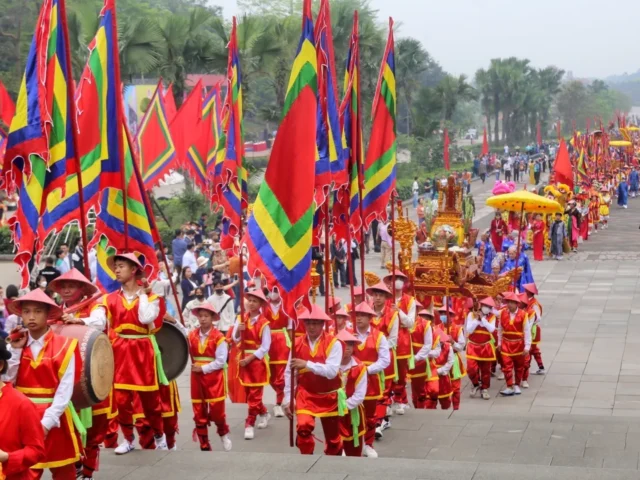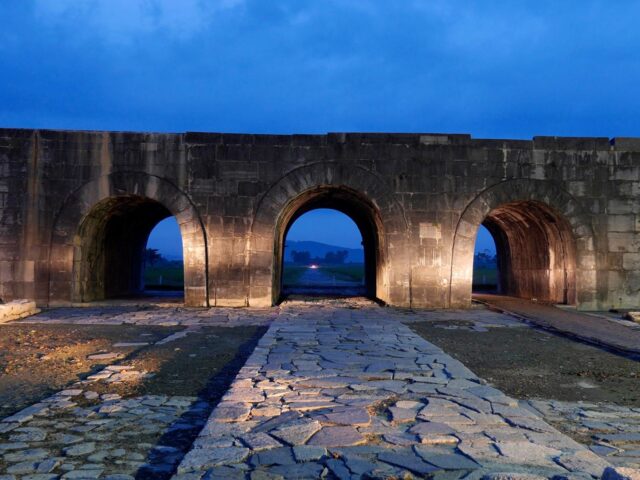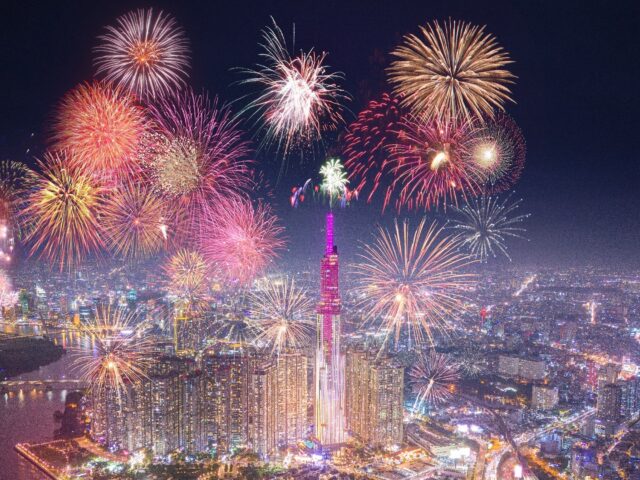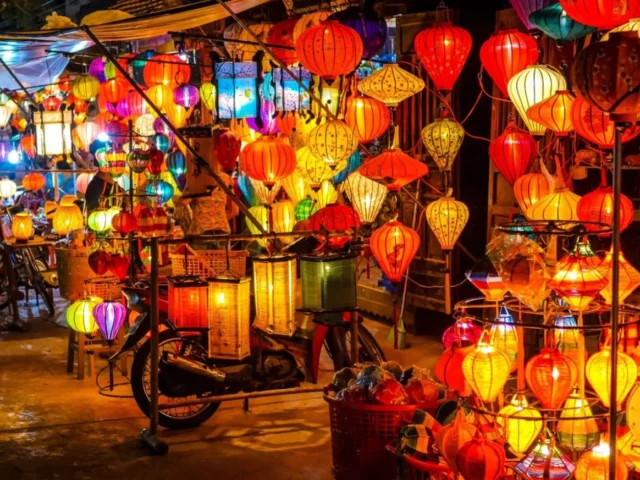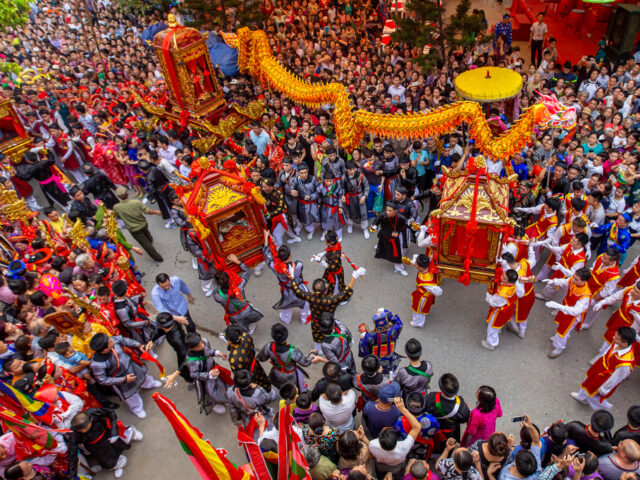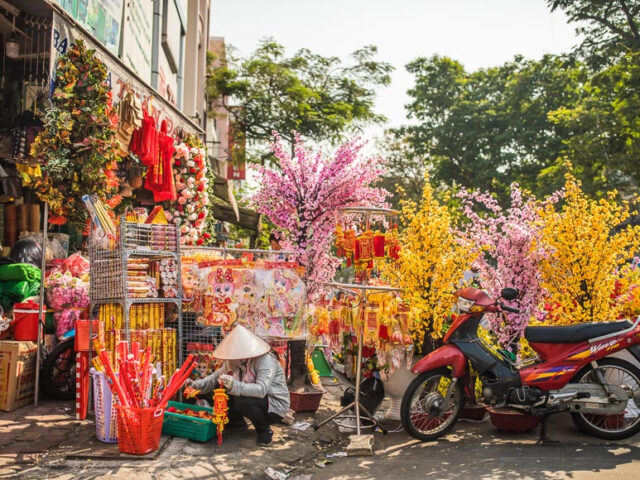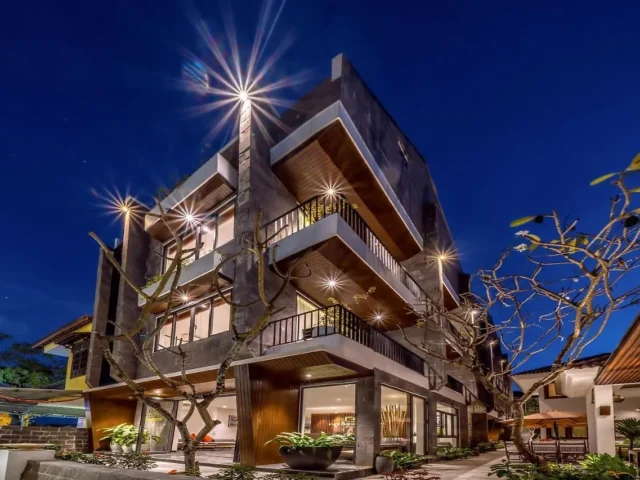Hanoi Train Street
Urban Exploration
Address
3 P. Trần Phú, Hàng Bông, Hoàn Kiếm, Hà Nội 100000, Vietnam
GPS
21.030132862362, 105.84406614304
Nestled within Hanoi’s bustling thoroughfares, the train streets hold a unique allure for international tourists exploring Vietnam. Travelers flock to this district to witness its signature local scenery and experience the fascinating sight of trains weaving through residential neighborhoods. In this blog post, we will explore the origins of Hanoi train streets, how to access it, and recommended ways to make the most out of your visit.
Where is the Hanoi Train Street?
The railway system extends throughout Hanoi, but there are two streets in the Old Quarter notably renowned for their train tracks. Hanoi Train Street is also called as Railway Street. It runs between Kham Thien and Le Duan Street or Phung Hung and Tran Phu Street. The street is lined with houses on either side, leaving just enough space for a train to pass through.
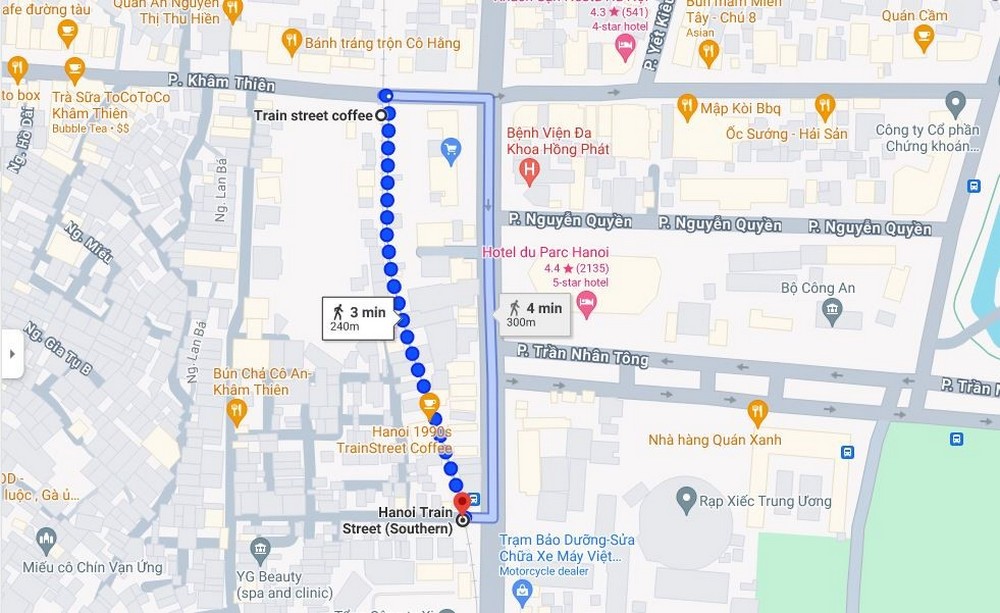
Map of Hanoi Train Street in Kham Thien and Le Duan Street
Length: 240 m

Map of Hanoi Train Street in Phung Hung and Tran Phu Street
Length: 600m
Both train streets offer an intriguing atmosphere with two-story coffee shops styled in Vietnamese decor. Here are some recommendations for your visit to these streets.:
- Le Duan Train Street and Phung Hung Train Street are both located in the Old Quarter and are 1.7km apart.
- Le Duan Train Street is located at the entrance of Hanoi Train Station. You can see the train station from the outside as there are ticket checking areas to get inside.
- Phung Hung Train Street is situated deeper within the ancient quarter and is close to the Phung Hung Mural Street.
History of Hanoi Train Street
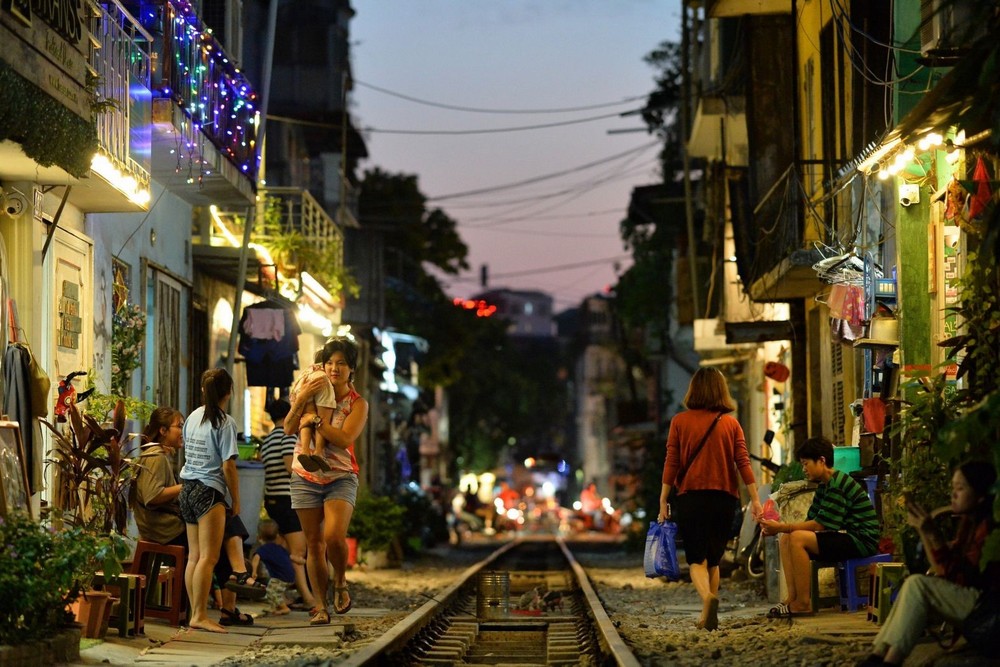
Hanoi train street history
The railway tracks were built by the French during their occupation of Vietnam in the late 19th century. The tracks were originally used to transport goods and people between Hanoi and other provinces in Vietnam. Over time, the city grew and expanded, and the tracks remained in the same location, surrounded by new buildings and houses.
Today, the train still runs carrying goods and passengers to and from the city. The Hanoi Train is also frequented by many foreign tourists eager to experience it firsthand. Popular routes chosen are Hanoi – Sapa or Hanoi – Hai Phong.
How to Enter Hanoi Train Street
Entering Hanoi Train Street is relatively easy, but there are a few things you should keep in mind to ensure a safe and enjoyable experience.
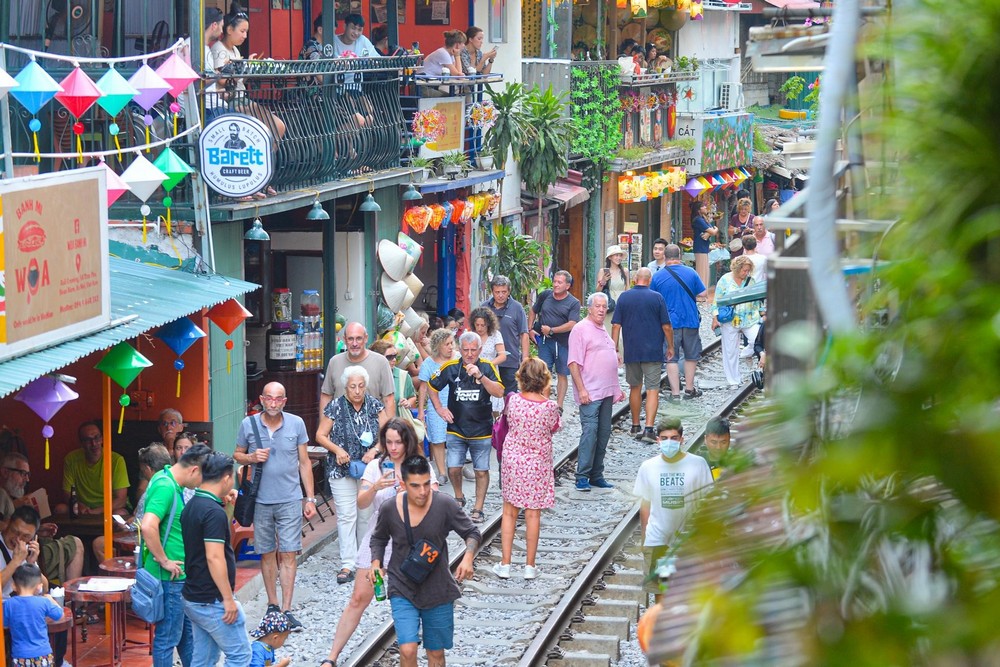
Visit Hanoi train street
Getting to Hanoi Train Street
The easiest way to get to Hanoi Train Street is by taking a taxi or motorbike taxi (known as “xe om” – Grab Bike in Vietnamese) to the Old Quarter. From there, you can walk to the street or ask your driver to drop you off at the entrance. You can also take a bus to bus stops at Le Duan street, Tran Phu street, or Phung Hung street and then walk to the street .
- Buses stop near Le Duan: 01, 03A, 08B, 08BCT, 11, 11CT, 32, 40, 40CT, 49
- Buses stop near Tran Phu: 01, 18, 36, 36 CT
- Buses stop near Phung Hung: 18
You can visit the train street at these addresses:
- 224 Le Duan, Kham Thien, Dong Da, Hanoi
- No 5 Tran Phu, Hang Bong, Hoan Kiem, Hanoi
- Along Phung Hung street
Tips for Entering Hanoi Train Street
- Check out the train schedule: You should arrive at least 30 minutes before the scheduled time to secure a good spot for viewing.
- Respect the locals: Hanoi Train Street is still a residential area, and people live their daily lives here. Be respectful of the local privacy and do not enter their homes or take photos without permission.
- Stay on the designated walking path: Be attentive when using the designated walking paths and avoid accessing the railway vicinity during, before, and after train operations.
- Keep an eye out for warning signs: There are signs along the street warning visitors of the approaching train. Pay attention to these signs and move to a safe spot when you see them.
- Do not litter: As with any tourist attraction, it is important to keep the area clean and respect the environment. Do not leave any trash behind and dispose of it properly.
- Select suitable footwear: If you intend to stroll along train tracks, it is best to avoid wearing high heels as the tracks are narrow and frequently scattered with small rocks. Walking shoes or sandals are good.
Hanoi Train Street Schedule
You are not obligated to buy any form of ticket to experience the train street. If you decide to sit inside a café and wait for the train to pass, you will need to pay for drinks (beer, tea, coffee, etc).
The train schedules differ between Le Duan Train Street and Phung Hung Train Street. Additionally, train timings vary throughout the year. You can refer to the Hanoi train street timetable updated in 2024 below:
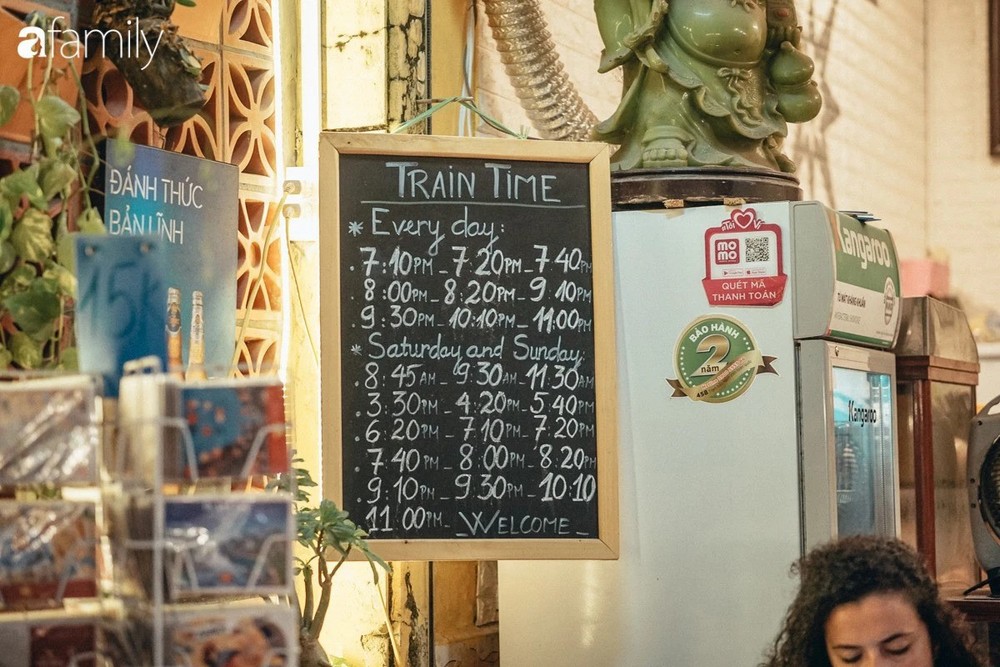
A board showcases Hanoi Train Schedule at local coffee shops
| Day | Time |
| Monday – Sunday (Le Duan Train Street) |
|
| Monday – Friday (Phung Hung Train Street) |
|
| Saturday – Sunday (Phung Hung Train Street) |
|
Where to Watch the Hanoi Train Street?
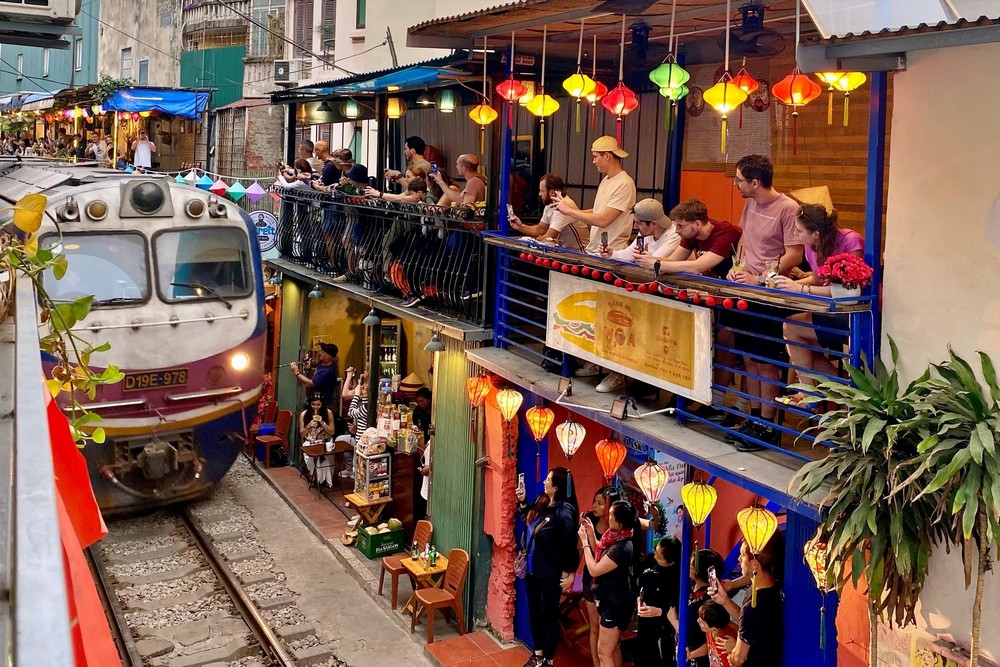
Spots to see Hanoi Train Street
There are several spots along Hanoi Train Street where you can watch the train pass by. Here are some suggestions for your trip:
- During the wait for the train’s passage, you can take a leisurely stroll along the nearby train street to observe how the railway cuts through the neighborhood, enjoy the scenery on either side, witness local life, and perhaps pick up a few souvenirs.
- Next, you can take advantage of the time before the train passes to capture beautiful photos along the train street, walking on the train tracks, snapping pictures with the shops, walls. A conical hat will be a lovely prop to accentuate your photo with a strong Vietnamese touch.
- Afterward, you might select a café for beverage enjoyment, offering picturesque and secure spots to observe the passing train. Options include outdoor seating alongside the wall, indoor seating, or second-floor seating for a rooftop view of the train.
Local residents in the neighborhood are very friendly and welcoming to visitors. They are willing to offer assistance by suggesting great photo spots, helping to snap the pics for you or lending chairs for better photo opportunities.




